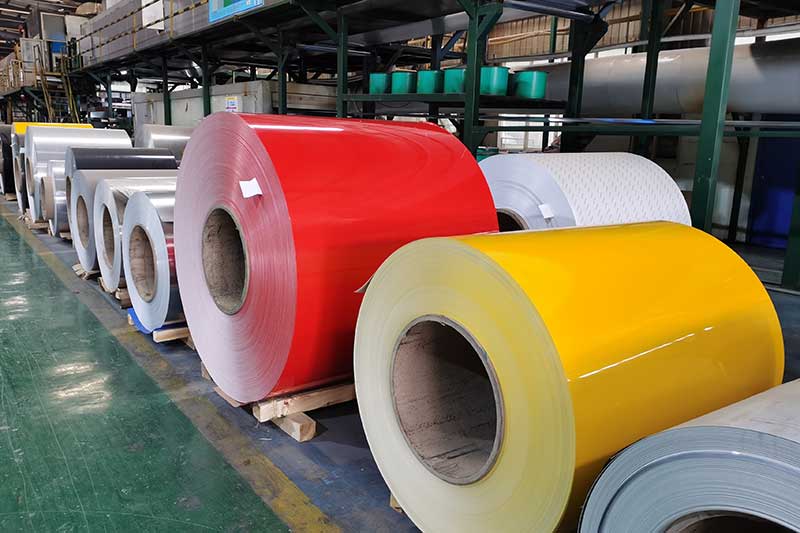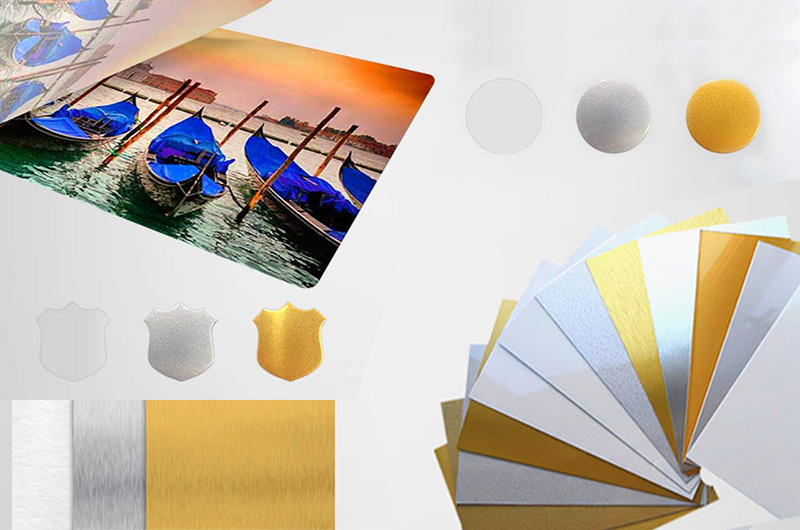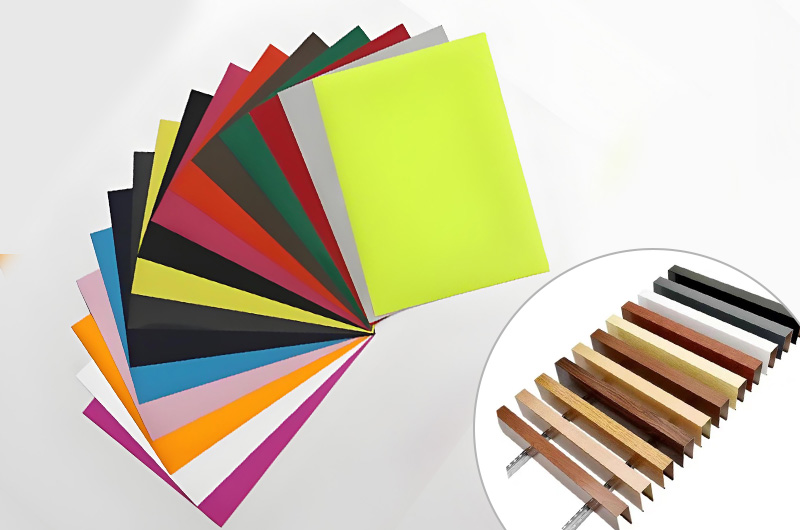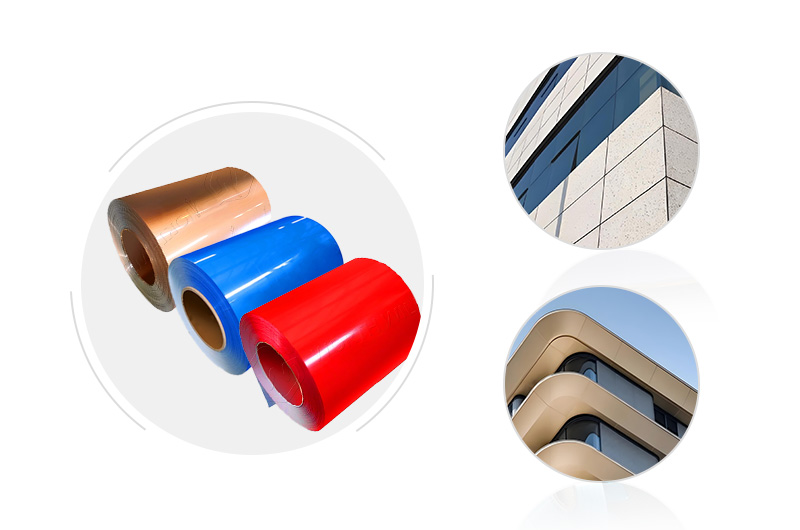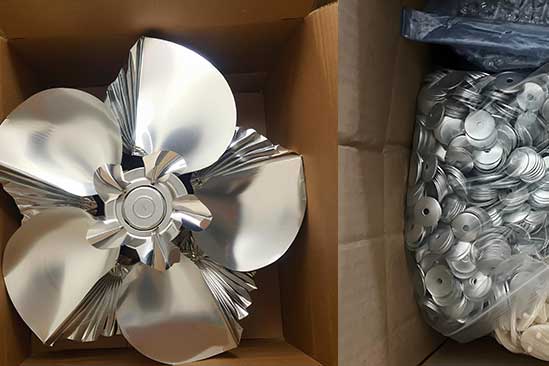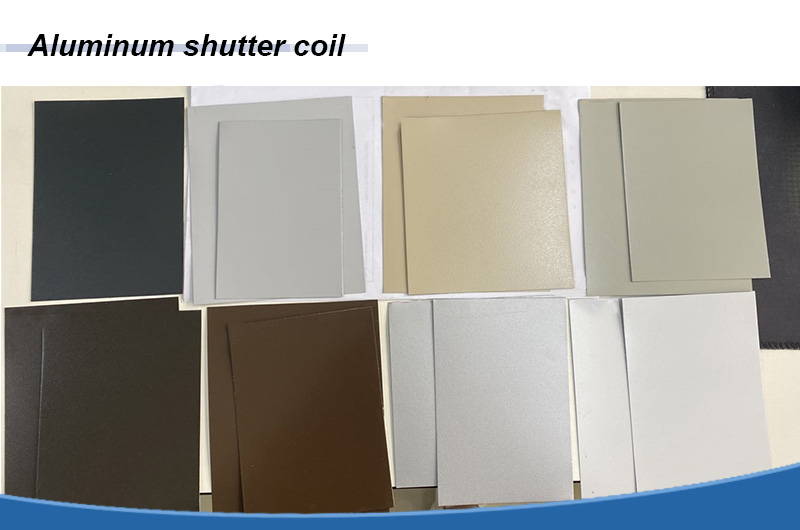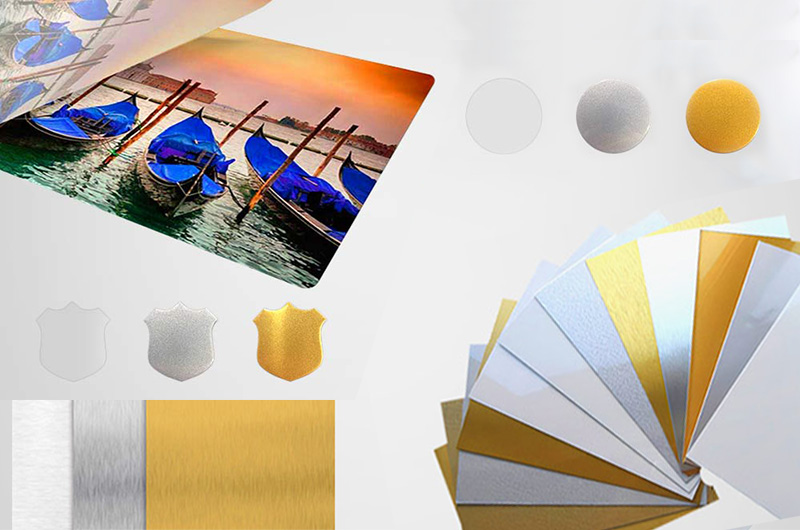Heat Transfer vs. Sublimation Printing
In today’s consumer market, "personalization" is no longer a niche demand—from custom couple T-shirts and corporate culture shirts to mugs and coasters in cultural and creative stores, and even exclusive jerseys from sports brands, customized products are occupying the market with explosive growth. Underpinning this trend are two core printing technologies: Heat Transfer Paper and Sublimation Printing.
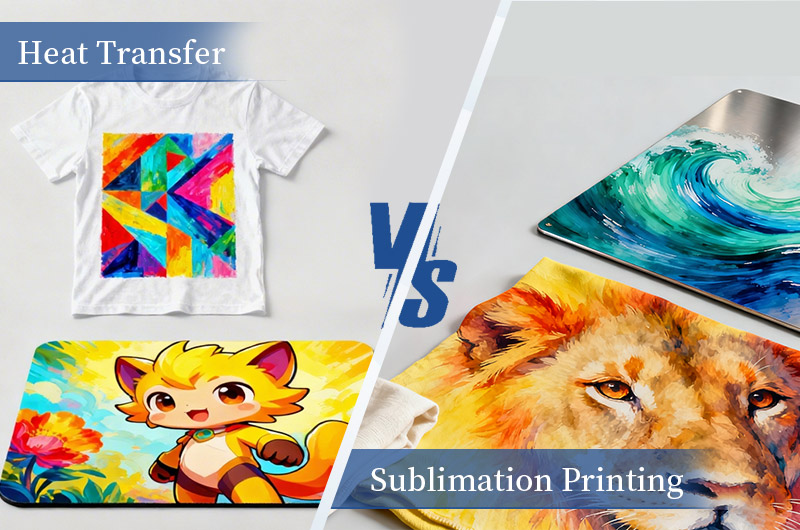
As two mainstream technologies, heat transfer and sublimation printing are often confused—some people think "they both transfer patterns using heat, so there’s no difference, " while others blindly pursue "sublimation as more high-end" without considering their actual needs. In fact, the core differences between the two lie in principles, material compatibility, cost structure, and application scenarios, which even directly affect the profit model of a business.
Starting from basic principles, this article systematically breaks down 10 core differences between the two, combined with practical industry experience (my opinions are marked accordingly), and provides a targeted selection guide to help you accurately match your needs.
Basic Definitions: The "Essential Difference" Between the Two Technologies
To understand the differences, we first need to clarify the core logic of each: heat transfer is "adhesive-based, " while sublimation printing is "penetration-based." This fundamental difference determines all subsequent performance variations.
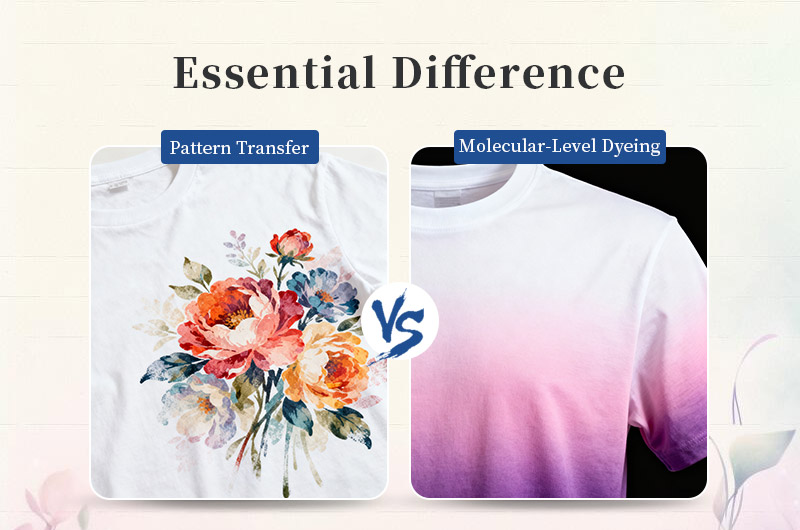
Heat Transfer: Pattern Transfer Based on "Sticker-Like Logic"
Heat transfer is not a single technology, but a general term for technologies that "transfer patterns from a carrier to the target material using heat." Common forms include heat transfer paper, heat transfer vinyl (HTV), and DTF (Direct Transfer Film), among which heat transfer paper is the most entry-level and widely used.
Its core principle is similar to a "high-end sticker": first, the designed pattern is printed on a dedicated carrier (such as heat transfer paper or vinyl film). Then, a heat press (or iron) applies high temperature (150-180°C) and moderate pressure to bond the pattern on the carrier (together with the carrier’s adhesive coating) to the surface of the target material (such as fabric or metal). After cooling, the carrier is peeled off, and the pattern remains attached to the material’s surface.
In simple terms, the pattern of heat transfer is "stuck" to the material—just like applying a custom screen protector to a phone. The pattern and the material form a "two-layer structure" rather than integrating into one.
Sublimation Printing: Molecular-Level Dyeing Based on the "Phase Change Principle"
The core of sublimation printing lies in utilizing the physical "sublimation phenomenon"—the process by which a substance changes directly from a solid to a gaseous state without passing through the liquid state. In printing, this principle is transformed into "molecular-level penetration of ink."
The specific process is as follows: a dedicated sublimation ink is used to print the pattern on sublimation paper. Then, high temperature (200-220°C) and high pressure are applied to convert the dye in the ink directly from a solid to a gaseous state. At this point, if the target material is polyester fiber (or a hard material with a polymer coating), its molecular structure slightly expands under high temperature, forming tiny gaps. The gaseous dye penetrates into the material through these gaps. After cooling, the material’s molecules contract, "locking" the dye inside. Finally, the pattern integrates with the material, becoming "part of the material itself."
To draw an analogy, sublimation printing is similar to "fabric dyeing"—the pattern is not an additional layer; instead, it resembles the material’s inherent color, making it impossible to distinguish "where the pattern ends and the base material begins" by touch.
My Opinion: Differences in Compatibility from a Molecular Structure Perspective
Why can sublimation printing only use polyester materials? This is a common question among beginners, and the answer essentially lies in molecular structure:
- Polyester fiber (polyester) is a "long-chain polymer" with certain gaps between molecules. These gaps expand under high temperature, just enough to allow gaseous dye to penetrate; after cooling, the gaps shrink, firmly locking the dye in place. This is the core reason for the excellent wash resistance of sublimated patterns.
- Cotton fiber is a "short-chain cellulose" with a dense and inelastic molecular structure. It does not expand under high temperature, so gaseous dye cannot penetrate and only stays on the surface. After cooling, the dye peels off with washing—hence, 100% cotton cannot be used for sublimation printing.
Heat transfer, however, is not selective about materials because it relies on "coating adhesion" rather than "molecular penetration." As long as the material can withstand temperatures above 150°C (such as cotton, linen, sublimation aluminum sheet, or glass), patterns can be attached via the coating—this is the key to its wide compatibility.
The "World of Difference" in Equipment and Cost Structure
Cost is the primary consideration for most people when choosing a technology, but the cost difference between the two is not only reflected in "initial investment" but also in "long-term consumables" and "production efficiency." Heat transfer features "low entry threshold and high consumable costs, " while sublimation printing has "high entry threshold and low consumable costs." This structure directly affects a business’s profit model.
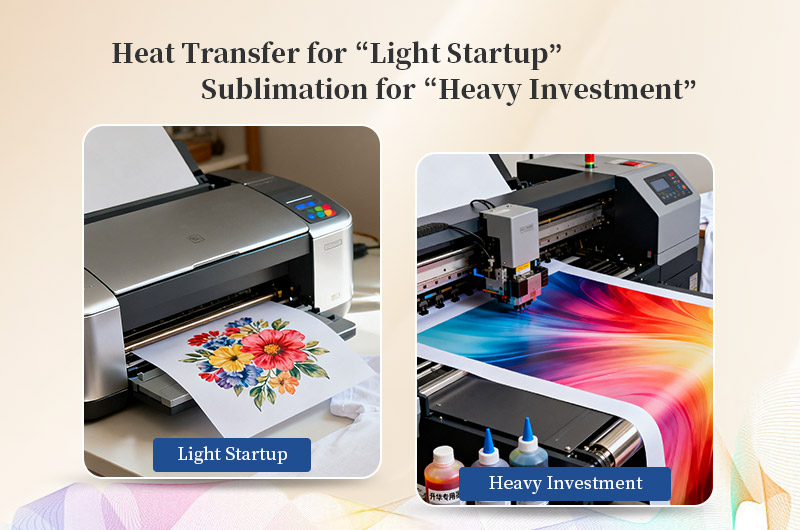
Initial Equipment Costs: Heat Transfer for "Light Startup, " Sublimation for "Heavy Investment"
Heat Transfer: Start with Just 500 RMB
The core advantage of heat transfer is its "low equipment threshold"—it can even utilize existing household equipment:
- Printer: If you already have a household inkjet printer (e.g., Epson L3218), no additional purchase is needed. If a new printer is required, an entry-level inkjet printer costs approximately 800-1500 RMB (pigment ink must be used to prevent fading after washing). Laser printers are more suitable for bulk text orders, costing around 1500-2000 RMB.
- Heat Press: An entry-level manual heat press (38×38cm, suitable for T-shirts and hoodies) costs about 300-800 RMB. For an extremely tight budget, a household iron can be used as a substitute (however, its uneven temperature easily causes partial pattern peeling, making it only suitable for occasional DIY projects).
- Other Consumables: Heat transfer paper (about 1 RMB/sheet for light-colored materials, 2 RMB/sheet for dark-colored ones), high-temperature tape (10 RMB/roll, used to fix the paper), and non-stick cloth (20 RMB/piece, used to protect the pattern).
My Opinion: The Advantage of "Low Trial-and-Error Cost" for Beginners
For novice DIY enthusiasts or small businesses, the "light startup" of heat transfer means "low-risk trial and error." For example, you can first spend 500 RMB on a heat press plus 100 RMB on heat transfer paper, and then recover the equipment cost by fulfilling 10 T-shirt orders (with a unit price of 50 RMB). In contrast, the initial investment for sublimation printing is at least 4000 RMB. If the order volume is insufficient, the equipment is likely to be idle—this is the core reason why many beginners start with heat transfer.
Sublimation Printing: A "Professional Threshold" Starting at 4000 RMB
Sublimation printing requires "dedicated" equipment that cannot be replaced by ordinary devices, resulting in a significantly higher initial investment:
- Sublimation Printer: Ordinary inkjet printers are incompatible with sublimation ink (sublimation ink contains volatile components that easily clog ordinary print heads). Dedicated models are required—entry-level ones like the Sawgrass SG500 cost about 2000-3000 RMB, while commercial-grade models like the Epson F570 cost 5000-8000 RMB.
- Sublimation Ink and Paper: Dedicated ink is necessary (100ml costs about 100 RMB, which can print 50 A4 sheets), and the paper costs approximately 1.5 RMB/sheet. Ordinary paper cannot be used as a substitute (its poor ink absorption causes blurry patterns).
- Heat Press: A high-precision heat press (temperature error ≤5°C) is required; otherwise, color deviation will occur. Entry-level models cost about 800-1500 RMB, while commercial-grade ones (with automatic temperature control) cost 3000-5000 RMB.
- Auxiliary Equipment: For hard materials (such as mugs), additional equipment like a mug press (about 800 RMB) or a plate press (about 1000 RMB) must be purchased, further increasing costs.
My Opinion: The "Cost Reversal" Phenomenon in Long-Term Operation
Although sublimation printing has a high initial investment, its long-term consumable costs are lower. Taking 500 T-shirts printed per month as an example: the cost of heat transfer paper + ink is about 1500 RMB (3 RMB/piece), while the cost of sublimation ink + paper is about 1000 RMB (2 RMB/piece)—resulting in an annual savings of 6000 RMB. Additionally, sublimation products have a higher unit price (sublimation T-shirts are 30%-50% more expensive than heat transfer ones for the same design). Therefore, when the monthly order volume exceeds 200 pieces, the "high initial investment" of sublimation gradually transforms into "high profits"—this is the core logic behind professional businesses eventually switching to sublimation.
Consumable Costs and Replacement Cycles
Beyond initial equipment, the "continuous consumption" and "replacement frequency" of consumables also affect long-term costs:
- Heat Transfer: Heat transfer paper is a "one-time consumable, " and different materials require corresponding types of paper (e.g., dark-colored fabrics must use dark-colored paper; no mixing is allowed). If orders involve a messy range of materials, it is easy to cause backlogs and waste of paper. Furthermore, the print head of an inkjet printer needs replacement every 6 months (costing about 200 RMB), and the toner cartridge of a laser printer needs replacement every 3 months (costing about 300 RMB).
- Sublimation Printing: Sublimation ink has "high utilization"—since the ink penetrates the material, there is almost no waste. Sublimation paper has strong compatibility (the same paper can be used for both fabrics and hard materials), so it is less likely to be backlogged. Moreover, the print head of a sublimation printer has a longer service life (needing replacement only once a year, costing about 300 RMB), leading to lower long-term maintenance costs.
"Narrow vs. Wide" Material Compatibility
Material compatibility is the most intuitive difference between the two—heat transfer "can print on almost anything but with varying results, " while sublimation printing "only works on a few materials but delivers optimal results." This directly defines the boundary of their application scenarios.
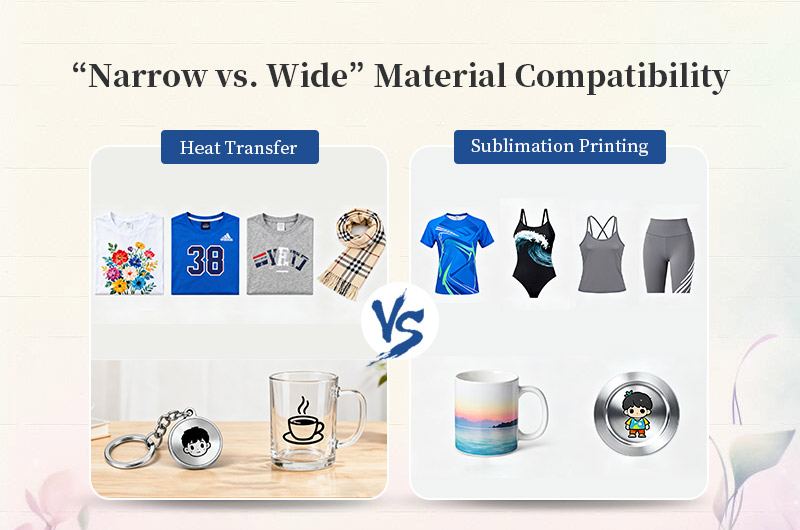
Heat Transfer: "Universal Material Compatibility" with Limitations
The advantage of heat transfer is its "no material restriction"—as long as the target material can withstand temperatures of 150-180°C (without being flammable or easily deformable), it can be printed on. Common compatible materials include:
- Fabrics: 100% cotton, polyester, cotton blends (e.g., 50% cotton + 50% polyester), wool, linen (requiring dedicated high-temperature paper), and even leather and canvas.
- Hard Materials: Metals (e.g., keychains), glass (e.g., mugs), wood (e.g., photo frames), and plastics (e.g., phone cases). However, the material surface must be flat (uneven surfaces easily cause pattern peeling).
Nevertheless, the "compatibility" of heat transfer does not mean "one-size-fits-all adaptation"—the finished effect varies significantly across different materials:
- Cotton Fabrics: Moderate pattern adhesion; edges may lift after 20-30 washes.
- Polyester Fabrics: Stronger adhesion than cotton, but with a more noticeable "foreign body feel" when touched.
- Dark-Colored Materials: Must use dark-colored heat transfer paper (with a white base); otherwise, the pattern will be covered by the base color. However, the white base increases the thickness of the pattern, making it more noticeable to the touch.
My Opinion: The "Irreplaceable" Advantage for Cotton Fabrics
In the custom T-shirt market, 80% of orders are for 100% cotton (consumers prefer the breathability of cotton). Since sublimation cannot be applied to 100% cotton, heat transfer secures a huge market space. For example, for campus club orders and corporate culture shirts (mostly cotton), heat transfer is the only option that balances cost and material requirements—even though sublimation offers a better feel, consumers will not give up the comfort of cotton for "a better touch."
Sublimation Printing: "Narrow Material Compatibility" with Optimal Results
Sublimation has an extremely narrow range of compatible materials, limited to two categories:
- 100% Polyester or High-Proportion Blended Fabrics: Such as quick-drying sportswear, swimwear, and yoga clothes (polyester content ≥80%)—these are the "golden compatible materials" for sublimation. The patterns have bright colors, no foreign body feel, and remain fade-free and crack-free even after 100 washes.
- Hard Materials with a Polymer Coating: Such as coated mugs, coated metal plates, and ABS plastic (e.g., mouse pads). The coating simulates the molecular structure of polyester, allowing gaseous dye to penetrate and adhere. Without a coating (e.g., ordinary glass or uncoated metal), sublimation ink will peel off directly, failing to form a valid pattern.
The "narrow compatibility" of sublimation also extends to color restrictions: it can only be used on white or light-colored materials (e.g., beige, light gray). This is because sublimation ink is a "transparent dye" that cannot cover dark base colors—printing on black fabric will completely hide the pattern, making it unrecognizable.
My Opinion: The "Exclusive Technology" Position in Sportswear
In the sportswear industry, sublimation is almost a "standard technology"—on one hand, most sportswear is made of polyester (quick-drying and wear-resistant), which is perfectly compatible with sublimation; on the other hand, sportswear requires frequent washing (e.g., daily washing after workouts), and the wash resistance of sublimation far exceeds that of heat transfer (heat transfer sportswear may crack after 10 washes). For example, professional sports T-shirts from brands like Li-Ning and Anta almost all use sublimation printing for patterns—this is why sublimation is "irreplaceable" in niche segments.
"Durability and Hand Feel" of Finished Products
Eighty percent of consumer dissatisfaction with customized products stems from "breaking after a few washes" and "uncomfortable to wear"—these two points are the core performance differences between heat transfer and sublimation. Sublimation outperforms heat transfer in durability and hand feel, but heat transfer can improve its shortcomings by upgrading consumables.
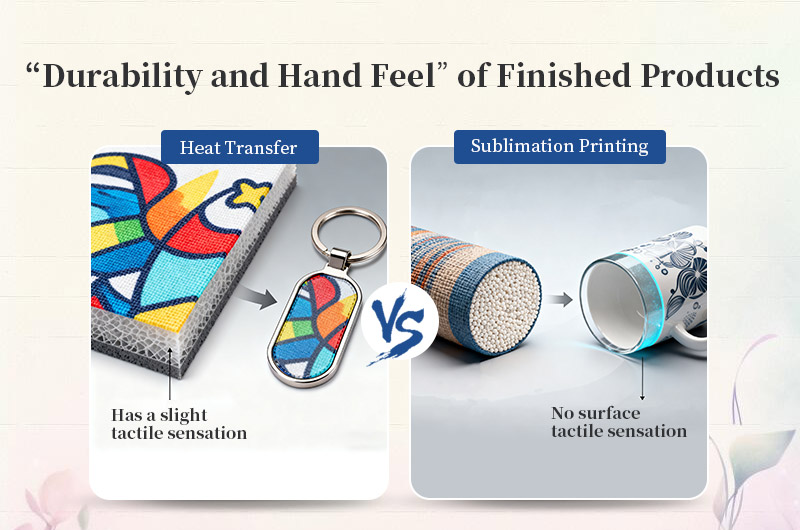
Durability: Sublimation "Lasts as Long as the Material, " Heat Transfer "Has a Limited Lifespan"
The core of durability lies in "how the pattern bonds with the material":
- Sublimation Printing: The pattern "penetrates inside the material" and forms a molecular bond with it, just like the material’s inherent color. Even with repeated friction and washing, there will be no "separation between the pattern and the material." Industry tests show that sublimated patterns on polyester fabrics can withstand more than 100 standard washes (30°C water temperature, regular detergent) with a color fading rate of only 5%-10%, far exceeding industry standards.
- Heat Transfer: The pattern is "attached to the material’s surface" and relies on the adhesion of the coating. During washing, the coating gradually ages and wears, causing the pattern to crack and fade. The pattern lifespan of ordinary heat transfer paper is about 20-30 washes; even high-end heat transfer paper (e.g., JET-PRO Soft Stretch) can only last up to 50 washes, and there is always a risk of edge lifting.
My Opinion: Hidden Differences in After-Sales Costs
Differences in durability directly translate to after-sales costs. For example, if a business uses heat transfer to fulfill an order of 100 corporate culture shirts, and 10 of them are returned due to washing-induced cracking, the after-sales cost (reproduction + shipping) is about 500 RMB. In contrast, the after-sales rate of sublimation printing is usually below 1%, with almost no additional costs. For businesses focused on repeat customers, the "low after-sales" advantage of sublimation gradually builds customer trust, making it more hassle-free than heat transfer.
Hand Feel: Sublimation "Seamless, " Heat Transfer "Has a Foreign Body Sensation"
Hand feel is the "intuitive experience" for consumers and the most perceptible difference between the two:
- Sublimation Printing: The pattern integrates with the material; when touched, it is impossible to distinguish "where the pattern is and where the blank area is." Especially on polyester fabrics, the hand feel is almost the same as that of unprinted fabric, and even softer than heat transfer (no coating thickness). This "seamless hand feel" is particularly important for close-fitting clothing (e.g., underwear, sports vests)—consumers will not accept "a hard pattern on the chest."
- Heat Transfer: The pattern surface has a thin coating (about 0.1-0.3mm thick); a clear "bulge" can be felt when touched. This is more noticeable with dark-colored heat transfer paper (with a white base), which has a thicker, heavier feel. Even high-end heat transfer paper can only "reduce the foreign body sensation" rather than eliminate it—for example, JET-PRO Soft Stretch has a thinner coating, but the pattern area can still be distinguished by touch.
My Opinion: "Hand Feel Tolerance" in Different Scenarios
The importance of hand feel depends on the application scenario:
- Children’s Clothing and Close-Fitting Garments: Sublimation is a must—parents and consumers have extremely low tolerance for "foreign body sensations."
- Outerwear and Backpacks: The hand feel difference of heat transfer is acceptable, as these products do not directly contact the skin, and consumers focus more on "pattern clarity" than hand feel.
- Cultural and Creative Products (e.g., Mugs, Keychains): The hand feel difference is insignificant, as patterns on hard materials inherently have a certain thickness, and consumers care more about "whether the pattern is wear-resistant."
"Complexity vs. Simplicity" of Operation Process and Efficiency
The "complexity" and "efficiency" of the operation process affect bulk production capabilities—heat transfer is suitable for small-batch, multi-style orders, while sublimation printing is suitable for large-batch, single-style orders. This is closely related to their "weeding" requirements and parameter settings.
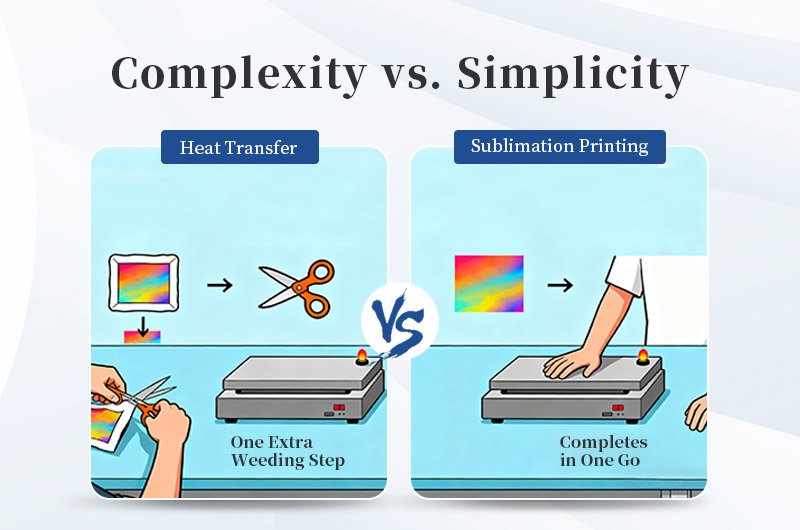
Operation Process: Heat Transfer Requires "One Extra Weeding Step, " Sublimation "Completes in One Go"
The operation process of both can be divided into four steps: "Design - Printing - Heat Transfer - Cooling, " but heat transfer requires an additional key step: "weeding" (trimming the excess edges).
Heat Transfer Process:
- Design: Create patterns using PS/Canva; for dark-colored fabrics, mirror printing is required (to avoid pattern inversion).
- Printing: Load heat transfer paper into the printer and select the "photo quality" mode.
- Weeding: Use scissors or a cutting machine (e.g., Cricut) to trim the blank area around the pattern—if not weeded, dark-colored fabrics will leave white paper edges, and light-colored fabrics will leave a transparent coating (noticeable to the touch).
- Heat Transfer: Set the heat press to 160-180°C, moderate pressure, and 20-30 seconds.
- Cooling: For light-colored paper, "hot peeling" is required (peel the paper while it’s hot); for dark-colored paper, "cold peeling" is required (peel after cooling completely).
Among these steps, "weeding" is the most time-consuming. For complex patterns (e.g., with thin lines or small elements), weeding one T-shirt can take 5-10 minutes, resulting in extremely low efficiency for bulk production.
Sublimation Printing Process:
- Design: Create patterns using dedicated software (e.g., Sawgrass Creative Studio); mirror printing is not required (the pattern direction is correct after transfer with sublimation paper).
- Printing: Load sublimation paper into the dedicated printer, select the "sublimation mode, " and the ink dries quickly (about 10 seconds per sheet) with no waiting time.
- Heat Transfer: Set the heat press to 190-220°C (190°C for polyester fabrics, 200°C for mugs), high pressure, and 30-40 seconds.
- Cooling: Peel the paper directly after cooling, no weeding needed—only the ink penetrates the material, and the paper leaves no residue, so there are no traces in the blank area.
The "no weeding" advantage of sublimation is particularly obvious in bulk production: for 100 T-shirts with the same pattern, sublimation can achieve "continuous printing - continuous heat transfer" with a total time of about 2 hours; in contrast, the weeding step of heat transfer adds at least 1 hour, resulting in a significant efficiency gap.
Parameter Settings: Heat Transfer "Flexible, " Sublimation "Precise"
The setting logic of heat transfer parameters (temperature, time, pressure) differs between the two, directly affecting the difficulty for beginners:
- Heat Transfer: High tolerance for parameter deviations—for example, a temperature deviation of ±10°C or a time deviation of ±5 seconds has little impact on the finished product. Even beginners can print qualified products, though durability may decrease slightly. This "flexibility" is suitable for DIY enthusiasts, who can get started without professional knowledge.
- Sublimation Printing: Extremely high requirements for parameters—a temperature deviation of ±5°C may cause color deviation (e.g., too low a temperature leads to pale patterns, too high leads to dark patterns), and a time deviation of ±3 seconds affects ink penetration depth (too short leads to easy pattern peeling, too long leads to material deformation). Beginners need to repeatedly adjust parameters (e.g., test print 1-2 pieces first) to master the skills, resulting in a higher entry barrier.
My Opinion: Differences in "Learning Curves" for Beginners
The learning curve for heat transfer is relatively gentle—beginners can usually master basic operations in 1-2 hours (weeding skills require 1-2 days of practice). In contrast, the learning curve for sublimation is steeper—beginners may need 1-2 weeks to proficiently master parameter settings (e.g., temperature differences for different materials) and often encounter issues like "color deviation" and "blurry patterns" in the early stages. However, once mastered, the "standardized operation" of sublimation is more suitable for bulk production—after parameters are fixed, anyone can print consistent products. In contrast, the weeding quality of heat transfer depends on the operator’s proficiency, leading to "inconsistent weeding results for the same batch of products."
"Niche Segments" of Application Scenarios
Based on the above differences, the two technologies have formed "niche segments" in application scenarios—heat transfer dominates the "multi-material, small-batch" market, while sublimation occupies the "high-quality, large-batch" market. There is almost no direct competition between them; instead, they complement each other.
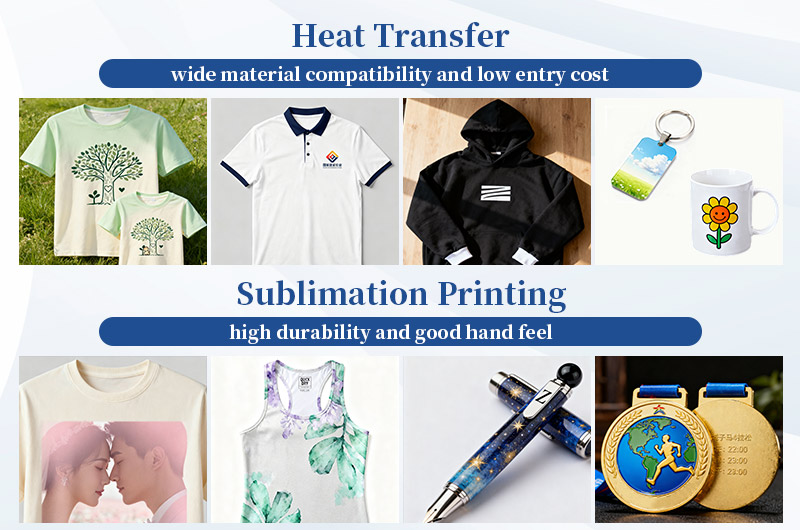
Core Application Scenarios for Heat Transfer
With advantages of "wide material compatibility and low entry cost, " heat transfer is suitable for the following scenarios:
- DIY and Small-Batch Customization: Such as family-made parent-child outfits and campus club orders for 10-20 T-shirts. No professional equipment is needed—household printers + irons can complete the work, with controllable costs.
- Cotton Material Orders: Such as corporate culture shirts (mostly cotton) and campus graduation shirts (90% demand for cotton). Since sublimation cannot be applied, heat transfer is the only option.
- Dark-Colored Material Orders: Such as black hoodies printed with white logos and dark blue canvas bags printed with colorful patterns. Sublimation cannot cover dark base colors, while dark-colored heat transfer paper solves this problem perfectly.
- Multi-Material Cultural and Creative Orders: Such as orders involving T-shirts, mugs, and keychains at the same time. Heat transfer can share a single set of equipment (only paper needs to be replaced), eliminating the need to purchase additional equipment like mug presses and reducing costs.
Core Application Scenarios for Sublimation Printing
With advantages of "high durability and good hand feel, " sublimation printing is suitable for the following scenarios:
- Sportswear and Outdoor Products: Such as quick-drying sportswear, swimwear, and yoga clothes (100% polyester). These products require frequent washing (e.g., daily washing after workouts), and the wash resistance of sublimation far exceeds that of heat transfer.
- Large-Batch Orders: Such as corporate annual meeting orders for over 500 T-shirts and bulk production of event clothing by sports brands. The "no weeding" and "high efficiency" of sublimation reduce unit costs and ensure consistent product quality.
- Hard Material Cultural and Creative Products: Such as coated mugs, metal medals, and plastic mouse pads. These products are used for a long time (e.g., mugs are washed daily), and the wear resistance of sublimation far exceeds that of heat transfer (heat transfer patterns are easily scratched).
- High-End Custom Orders: Such as commemorative T-shirts for wedding photography and custom accessories for luxury brands. Customers are willing to pay a premium for "high quality and seamless hand feel" (unit price can reach over 100 RMB), providing larger profit margins for sublimation.
My Opinion: The "Hybrid Operation" Strategy for Businesses
Mature custom businesses rarely choose "one or the other"; instead, they adopt a "hybrid operation" model: using heat transfer to fulfill cotton, dark-colored, and small-batch orders (covering basic needs) and sublimation to handle polyester, light-colored, and large-batch orders (earning high profits). For example, if a business receives both "10 cotton club shirts" and "500 polyester sports shirts, " it uses heat transfer for the former (low cost, good compatibility) and sublimation for the latter (high efficiency, high profit)—meeting different customer needs while maximizing equipment utilization.
Industry Trends and Future Directions
With technological development, the boundaries between the two are gradually blurring—heat transfer is evolving toward "low foreign body sensation and high durability, " while sublimation printing is breaking through toward "wide material compatibility." In the future, the choice may no longer be "either/or" but "combination based on needs."
Technological Upgrade of Heat Transfer: The Rise of DTF (Direct Transfer Film)
The shortcomings of traditional heat transfer paper (poor durability, time-consuming weeding) have led to the development of DTF technology. It directly prints patterns on transparent film, requiring no weeding. After heat transfer, the film integrates with the pattern, providing a hand feel close to sublimation and compatibility with multiple materials (cotton, polyester, etc.).
DTF’s advantage lies in "combining the compatibility of heat transfer and the hand feel of sublimation, " but its equipment cost is higher than traditional heat transfer (entry-level DTF printers cost about 10, 000 RMB), making it suitable for medium-batch orders (over 1, 000 pieces per month). In the future, DTF may gradually replace traditional heat transfer paper and become the mainstream choice for "multi-material customization."
Technological Breakthrough of Sublimation Printing: Attempts at Cotton Sublimation
To solve the "inability to print on cotton" shortcoming, the industry has launched "cotton sublimation pretreatment solution"—first, spray a layer of pretreatment solution on cotton fabric (to simulate a polyester coating), then perform sublimation printing. However, this method still has limitations: the pretreatment solution increases fabric costs (about 1 RMB/piece), and the pattern’s wash resistance only reaches 50 washes (lower than the 100 washes of polyester sublimation). Currently, it is only used in niche scenarios (e.g., high-end cotton T-shirts) and has not been popularized.
My Opinion: "Dynamic Adjustment" of Technology Selection
In the next 5 years, technology selection in the customization industry will become more "flexible"—it will no longer be "heat transfer vs. sublimation, " but "selecting technology based on order characteristics":
- Small-batch, multi-material, dark-colored: Traditional heat transfer or DTF.
- Large-batch, polyester, light-colored: Sublimation.
- High-end cotton, small-batch: Cotton sublimation pretreatment solution + sublimation.
- Hard materials, long-term use: Sublimation (more mature coating technology).
For businesses, there is no need to blindly pursue "the latest technology"; instead, they should dynamically adjust based on order structure. For example, if cotton accounts for a high proportion of orders, prioritize investment in heat transfer; if polyester dominates, focus on sublimation—avoiding equipment idleness.
3 Steps to Find the Right Technology for You
Combining the above differences, you can accurately select the right technology through 3 steps: "order characteristics - cost budget - long-term planning."
Step 1: Analyze Order Characteristics (Core Basis)
- If your orders are mainly "cotton, dark-colored, small-batch (<50 pieces)" (e.g., club shirts, family DIY): Choose heat transfer.
- If your orders are mainly "polyester, light-colored, large-batch (>100 pieces)" (e.g., sportswear, corporate bulk orders): Choose sublimation.
- If your orders involve "mixed materials, multiple styles, and no fixed pattern" (e.g., cultural and creative stores undertaking various customizations): Choose heat transfer (or DTF).
- If your orders require "high durability and seamless hand feel" (e.g., children’s clothing, close-fitting garments): Choose sublimation.
Step 2: Evaluate Cost Budget (Practical Constraint)
- Budget < 1, 000 RMB (pure DIY): Choose heat transfer (household printer + entry-level heat press).
- Budget 1, 000-5, 000 RMB (part-time business): Choose heat transfer (commercial inkjet printer + mid-range heat press), or try sublimation with a small budget (entry-level sublimation printer + heat press).
- Budget > 5, 000 RMB (full-time business): Choose based on order characteristics—heat transfer + DTF if cotton dominates, or sublimation + mug press if polyester dominates.
Step 3: Plan Long-Term Business (Development Perspective)
- If you plan to "test the market first, then expand": Start with heat transfer, and add sublimation equipment after accumulating customers.
- If you plan to "focus on sportswear and high-end customization": Invest directly in sublimation to build a quality barrier.
- If you plan to "undertake multi-category orders (fabrics + hard materials)": Adopt hybrid operation—heat transfer for fabrics and sublimation for hard materials.
Frequently Asked Questions (FAQ)
Can an ordinary inkjet printer be modified into a sublimation printer?
It is not recommended. The print head material of ordinary printers (e.g., the print head of Epson L3218) cannot withstand the volatile components in sublimation ink. After modification, the print head is prone to clogging, and its service life is shortened to 1-2 months—ultimately increasing costs. Beginners are advised to purchase original sublimation printers (e.g., Sawgrass SG500) for better stability.
Can heat transfer achieve "photo-level clarity" for patterns?
Yes, but two conditions must be met:
- Use inkjet heat transfer paper (laser paper has poor color reproduction).
- Match with pigment ink (dye ink fades easily).
For example, using an Epson L805 inkjet printer + JET-PRO Soft Stretch paper can print 300 DPI photo patterns with clarity close to sublimation, but the wash resistance is still lower than that of sublimation.
Can sublimated mugs be put in the microwave?
It depends on the coating material: Sublimated mugs with a food-grade coating (e.g., Unisub brand) can be placed in the microwave (≤100°C). Non-food-grade coatings may release harmful substances, so microwaving is not recommended. Always confirm "food-grade certification" when purchasing to avoid safety risks.
Is there a difference in environmental friendliness between heat transfer and sublimation?
Sublimation is more environmentally friendly: Sublimation ink contains no PVC components, and the paper is recyclable. In contrast, some low-cost heat transfer papers contain PVC, which may release trace harmful substances during high-temperature transfer, and waste paper is difficult to degrade. If customers have environmental requirements (e.g., corporate ESG orders), prioritize sublimation.
Conclusion
Heat transfer and sublimation printing are not a matter of "which is better, " but "which is more suitable"—heat transfer is an "entry-friendly all-rounder" suitable for covering a wide range of needs and controlling costs, while sublimation is a "quality-prioritized specialist" suitable for focusing on high-profit, high-quality scenarios. The essence of their difference lies in the balance between "cost-effectiveness" and "quality": If you are a DIY enthusiast or a small business, heat transfer helps you get started quickly; if you are a professional business or plan for long-term development, sublimation helps you build a competitive barrier.
Ultimately, there is no "one-size-fits-all answer" for technology selection. However, clear demand analysis and cost planning can help you avoid pitfalls like "buying equipment that goes unused" or "choosing a technology that doesn’t make money, " allowing you to move more steadily and further in the customized product market.
